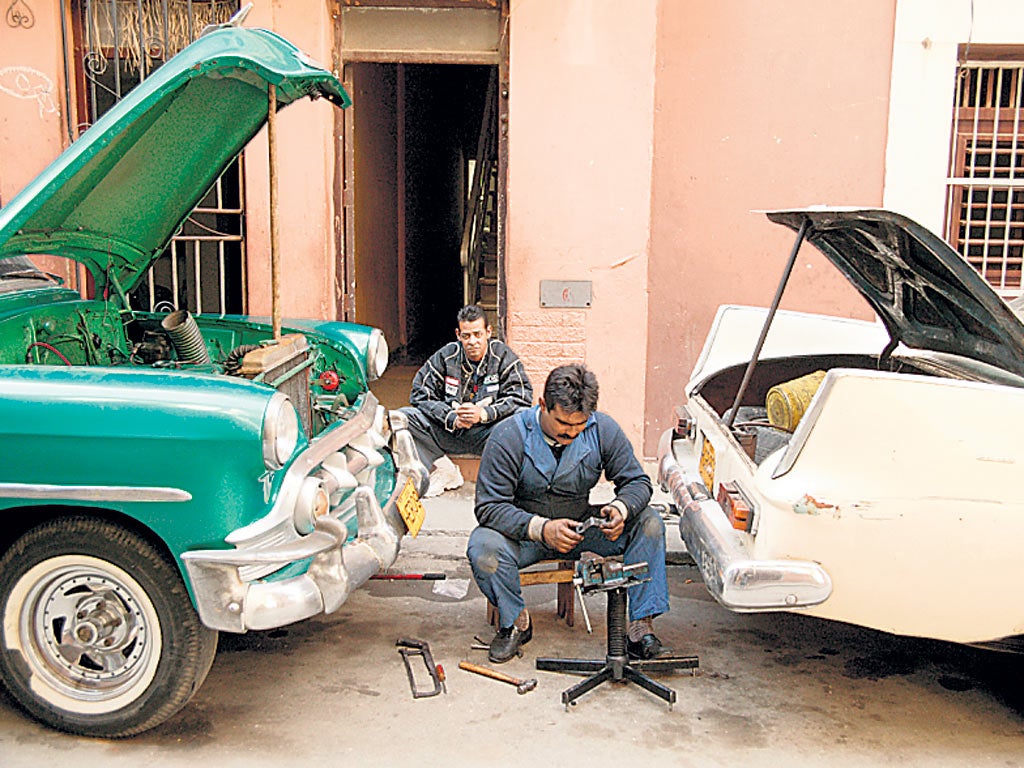End of the road for Havana's bangers
Big old rusting cars are part of Cuba's appeal. But their days may be numbered. By Simon Calder

You step off the plane at Jose Marti international airport outside Havana, and immediately find yourself in a rumbling, rusting automotive museum. The highway into the centre of the Cuban capital comprises a noxious, noisy procession of trucks and cars from either side of the Cold War. The lorries that clog up the carretera are vile Soviet brutes that, you suspect, would survive a nuclear attack.
Growling as they weave between them are the relics of capitalism in its most glorious incarnation: 1950s Detroit. And it is thanks to the US that the monsters of Motown are still providing "transportational solutions" to the citizens of Cuba.
The best way, believes Washington, to "assist the Cuban people in regaining their freedom and prosperity, as well as in joining the community of democratic countries that are flourishing in the Western Hemisphere," is to impose harsh economic sanctions against the Caribbean's largest island. Five decades and 11 presidents later, the embargo has failed to substantially shift the regime.
On Wednesday, though, circumstances did change a little. As part of a broader programme of economic reforms, President Raul Castro relaxed the rules on buying and selling cars; hitherto only pre-revolutionary vehicles could be traded freely. The rule change will still only apply to foreign nationals and Cubans who have official permission. But the pace at which the gas-guzzlers are replaced will accelerate.
At the moment, as far as cars go, the music stopped in post-revolutionary Cuba in 1960, when, even if the nouveau-Marxists could afford new vehicles from the US, car-makers were not allowed to export them.
So an astonishing five-decade programme of "make do and mend" began, with inventiveness battling against built-in obsolescence. A combination of backstreet welding and mechanical excellence kept the Pontiacs and Studebakers going.
In Havana, vehicles with thirsty V8 engines have long provided an alternative to overcrowded buses. Even in the depths of the "Special Period", after collapse of the USSR, they kept rolling.
In the 21st century their numbers have slowly diminished – not because they have rusted to death, or hit one bache (pothole) too many, but because of the demand from overseas collectors. And as Cuba's economy has emerged from the post-Soviet depths, the American beauties have become a lumbering sideshow.
Ironically, by the time Americans are able to visit Cuba (current laws forbid tourism) their idea of an island filled with relics of an innocent America are likely to be misplaced.
Not nostalgia all is lost, however. The pride of Cuban Railways comprises rolling stock from the 1960s for Trans Europ Express trains.
Subscribe to Independent Premium to bookmark this article
Want to bookmark your favourite articles and stories to read or reference later? Start your Independent Premium subscription today.

Join our commenting forum
Join thought-provoking conversations, follow other Independent readers and see their replies